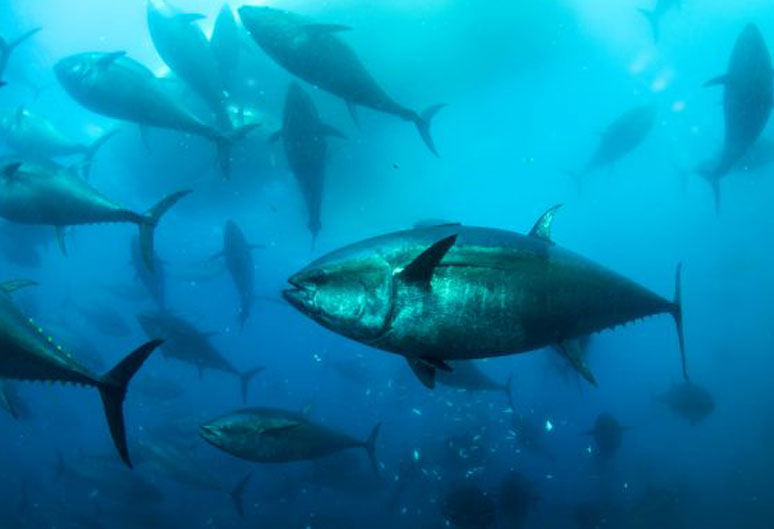Louise Murray dons her diving gear to photograph the Atlantic bluefin tuna
The Friday morning before I leave for Andalusia to shoot Atlantic bluefin tuna, I’m making a routine test check of all my diving and underwater photography gear. A sticky button in the camera housing means that I cannot switch between stills and video. I call Fixation for an emergency assist and hastily make my way down for an urgent repair, before catching my flight later that day.
In Spain, it’s 32°C with a light breeze and I am just about to dive with 900 giant fish, each weighing between 150 and 200 kilos. Understandably I’m a bit nervous. I’ve been dressed in a black dry suit for over two hours and am struggling to stay cool. The boat is moored in a fattening pen about a mile offshore and we can see the huge fish swimming below the surface.
Here, fish captured in May are fattened up on a daily diet of defrosted sardines and mackerel before being sold to Japanese buyers in September. At least 10 tonnes of sardines have preceded me into the water today. This is not good. Fish scales are highly reflective and my underwater flash will bounce off them, a bit like using flash in a snowstorm!
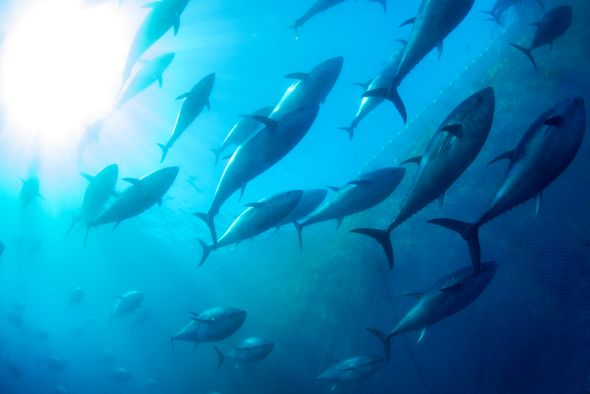
For safety I have a dive buddy, Antonio. I’ve explained the nature of a fisheye lens and its 180-degree angle of view to him, so he is briefed to stay behind me unless I call him into a picture for scale. Antonio is there because although I am a certified commercial diver, these nets and others like them in fish farms worldwide are dangerous places to be. The powerful fish must swim constantly, and they do so in circles, meaning they create a vortex. The unwary can be sucked to the bottom of the net 30 metres down, or pushed against the outside of the swirling fish, where it’s easy to find dive gear or camera getting caught in the net. Alone, it’s quite possible to drown.
I’m here to complete a shoot of the tuna fishery for a German magazine – Unterwasser – producing an environmental piece about the state of the Atlantic tuna.
It has taken me since February, with the help of an excellent young translator called Polly, to negotiate diving with these magnificent fish. It’s now July. I’ve spent ages studying the tide tables and wind forecasts to find a small window when the sea surface will be calm, and visibility underwater acceptable. If you think topside shooting can be challenging, try working underwater. Imagine shooting in zero gravity you’ll get part of the picture, but then throw in wind, tides, currents and limited visibility – the variables are near-endless.
Fortunately I have excellent kit – an Aquatica housing for my Nikon D800 with a glass dome port which allows access to all of the camera’s controls while underwater, plus a couple of Inon flashes and a pair of Sola video lights.
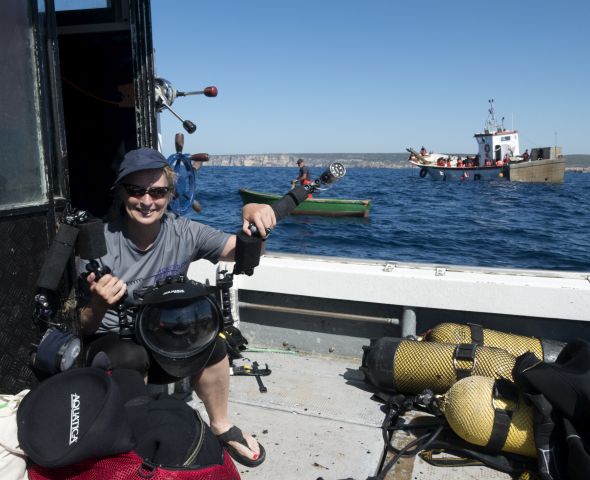
Louise Murray with Nikon D800 in Aquatica housing on board the tuna dive boat at Barbate, Spain
Back at the hotel I finish downloading and backing up, and yes, predictably the shots are murky, turbid and full of reflective fish scales. And worse there is a reflected Nikon logo in some images when shooting into sun. This at least is easily rectified by sticking a plaster over the logo on the D800 and blacking it out with a marker pen.
I’ve managed to explain to Sebastian the boss why it’s so important for me to start shooting before the sardines go into the pen. Tomorrow I will be diving with 900 large, fast and hungry fish. Time for a cold beer.
The next day we travel offshore in a rolling swell. You need a good sense of balance and a strong stomach for this kind of work. This time I get in before the sardines, and the tuna – known as the Maseratis of the sea – are truly motoring in a tight swirl of fishy power. Antonio is with me and I get the shots over the course of an hour in the water.
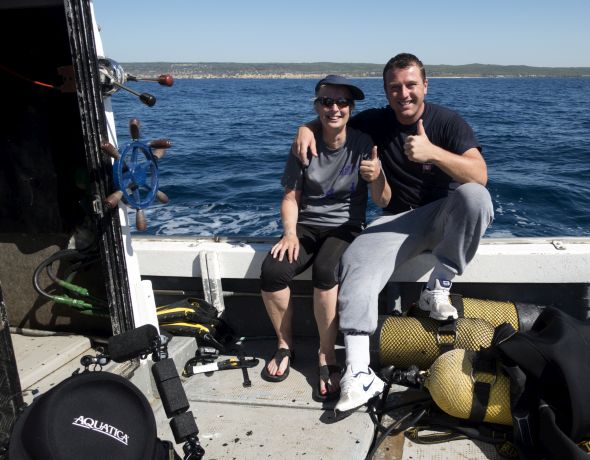
Louise Murray and dive buddy Antonio
The dead sardines start to rain down in the latter half of the shoot, so I decide to try and focus on a single sardine, secure in the knowledge that there shortly be a 150-200 kilo fish blasting out of the blue with the intent of dispatching it. I don’t get the money shot, as the acceleration of this top ocean predator is hard to predict, and with limited visibility I can’t see them coming fast out of the blue.
A few more dives and eventually I would have nailed it, but the weather stopped cooperating and with high winds forecast for the next five days, I had to leave – me, my cameras and all of my dive kit stinking strongly of sardines.
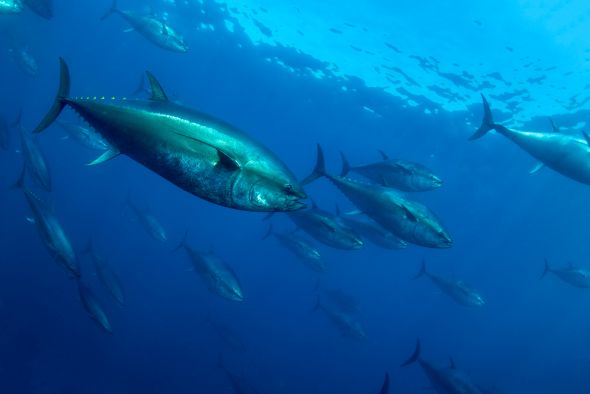
The images from this shoot will be published in Unterwasser magazine, either late this year or early next year. The bluefin tuna remains classified as an “endangered species” by the IUCN, its population having declined by as much as 90% in some areas due to overfishing. A video from this shoot was selected as a featured clip by the Science Photo Library, and can be seen here.
Louise Murray is an award-winning freelance journalist and photographer whose work has been published in the Guardian, the Times, and countless international magazines, books and popular science publication, and can be found at louisemurray.com

